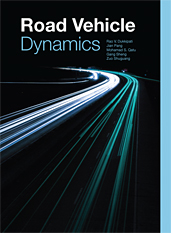Technical Paper
Precise Steering Angle Control of Lane Change Assist System
2017-09-23
2017-01-2002
After obtaining the optimal trajectory through the lane change decision and trajectory planning, the last key technology for the automatic lane change assist system is to carry out the precise and rapid steering actuation according to the front wheel angle demand. Therefore, an automatic lane change system model including a BLDCM (brushless DC motor) model, a steering system model and a vehicle dynamics model is first established in this paper. Electromagnetic characteristics of the motor, the moment of the inertia and viscous friction etc. are considered in these models. Then, a SMC (Sliding Mode Control) algorithm for the steering system is designed to follow the steering angle input. The control torque of the steering motor is obtained through the system model according to steering angle demand. After that, the control current is calculated considering of electromagnetic characteristics of the BLDCM. Debugging and optimization of the control algorithm are done through simulations.


